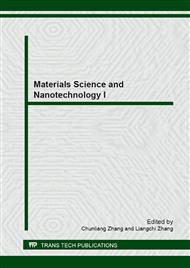p.290
p.295
p.299
p.303
p.307
p.312
p.317
p.321
p.325
Effects of Na+ on Spectral Properties of Er3+: CaF2 Transparent Ceramic
Abstract:
Er3+, Na+-co-doped CaF2 transparent ceramics with Er3+ dopant concentration of 5at% and Na+ of 0, 0.5, 1.0 and 1.5at% were fabricated by the vacuum hot pressing method. Absorption spectra, emission spectra and fluorescence lifetimes were measured at room temperature to study the effects of Na+ on the spectral properties of Er3+: CaF2 transparent ceramic. The results showed that after introducing Na ion into Er3+: CaF2 transparent ceramics, charge-neutralized Er3+-Na+ structure formed which prevented Er3+ from clustering, the absorption intensity of ceramics decreased with the increase of Na+ concentration, but the spectroscopy and photoluminescence properties of Er3+ in CaF2 transparent ceramic could be modulated by adjusting the concentration of Na+. Co-doping Na+ to increase fluorescence lifetime should have an optimal value.
Info:
Periodical:
Pages:
307-311
Citation:
Online since:
December 2012
Authors:
Keywords:
Price:
Сopyright:
© 2013 Trans Tech Publications Ltd. All Rights Reserved
Share:
Citation:


